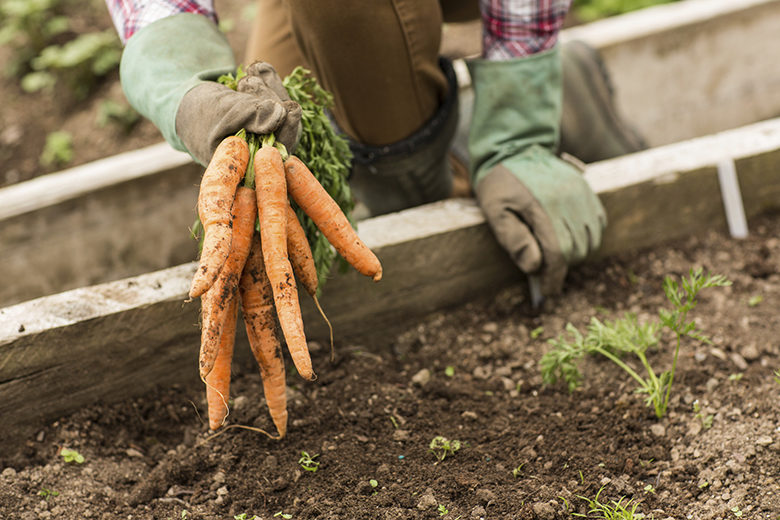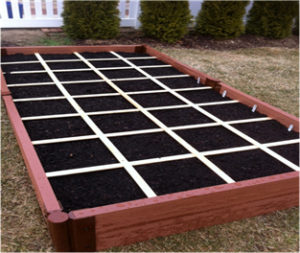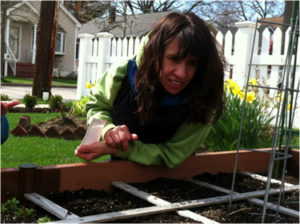
It’s time to get dirty! As someone who builds her reputation on eating lots of fruits and vegetables, I can’t urge you enough to start growing them yourself. Aside from the fact it teaches you a lot about what it takes to cultivate produce, you will always have access to great organic vegetables in your yard. It also gives you street cred with the neighbors.
I’m the type of person who cherishes a good manicure so I never thought I’d be able to master a vegetable garden. Luckily, a few years ago I got to visit Burpee’s Fordhook Farm in Pennsylvania where I learned how accessible it was, and I’ve been gardening ever since.
Find Your Space
The first thing to do is find a small piece of land that gets at least 6 to 8 hours of direct sunlight daily and has access to water. I started out with a raised bed garden, which is a wood frame structure that sits above the ground and that you can buy or build yourself. This type of setup enables you to add good soil that won’t get compacted, since you won’t be walking between rows but rather reaching across to seed, weed and harvest. That means better-aerated and hydrated soil. My first one was 4-feet-by-8-feet but you can buy a smaller one or just use large containers.
Browse Away

The next part is where the fun starts — seed catalogs. It’s so exciting to look at all the colorful vegetables and different varieties available. Narrow it down to a few easy plants to start with. Lettuce is a no-brainer (plus, there are so many different types) and our cherry tomatoes haven’t disappointed us in three years. Next, try some greens such as kale and Swiss chard, and then throw in some green beans and herbs. That’s more than enough to get you started. If you don’t feel confident to start with seeds you can always buy garden-ready plants.
Chart for Success

I suggest making a chart to plot how you are going to lay out your garden. This way, when you go to put your seeds or plants in the ground, you will know exactly where they go. Follow the directions on the seed package, and thin out as suggested. Plant the tallest plants on the northern-most edge, so that they don’t cast a shadow on the rest of the plants. And, to get really organized, try adding latticework that divides the soil into one-foot squares. It’s the most productive way to grow in the smallest space available.
Once you are done with your setup all you need to do is water. Better get your favorite dressing recipe ready for the awesome garden salads you are going to make!

